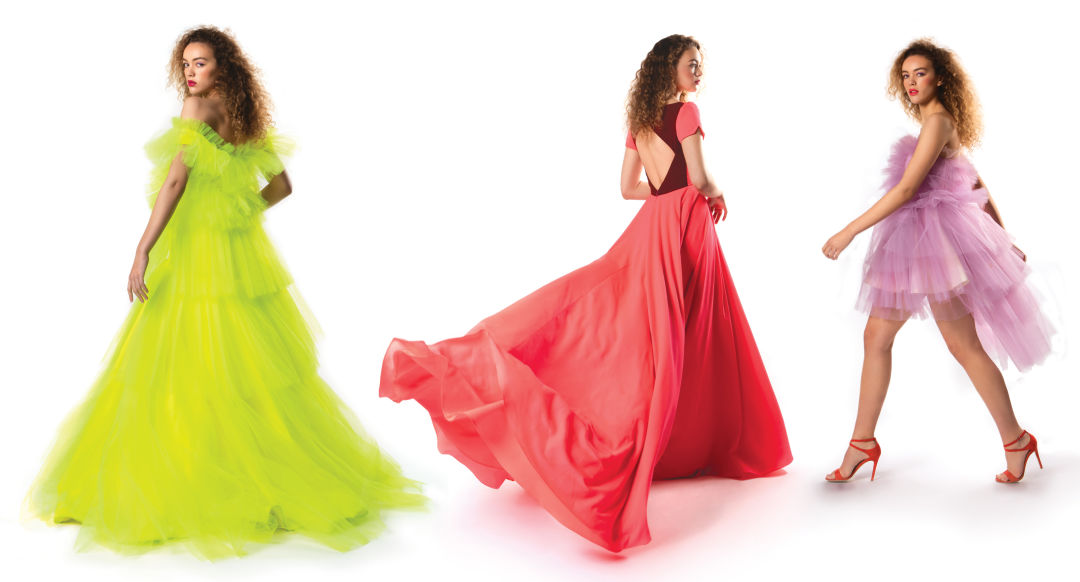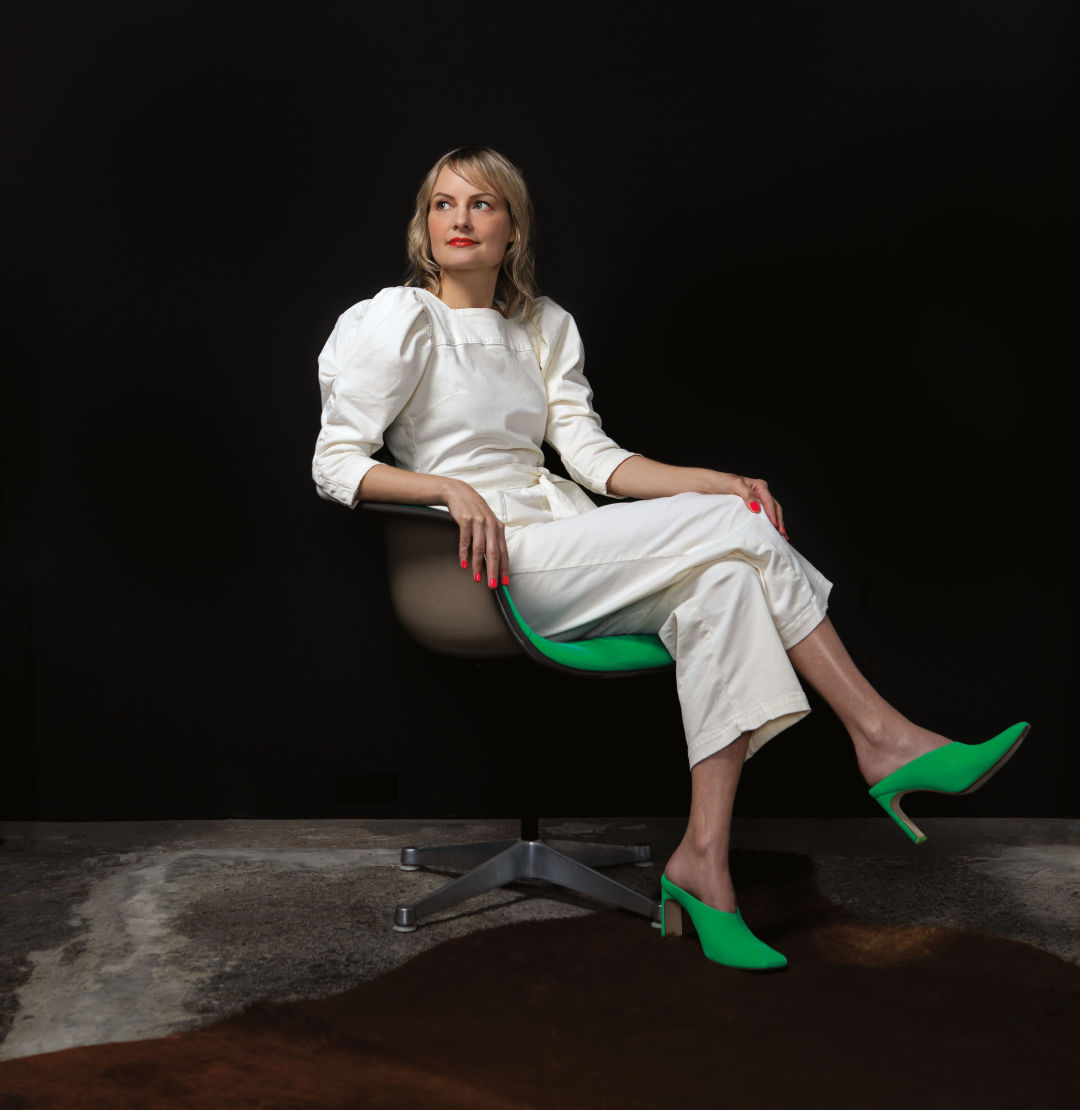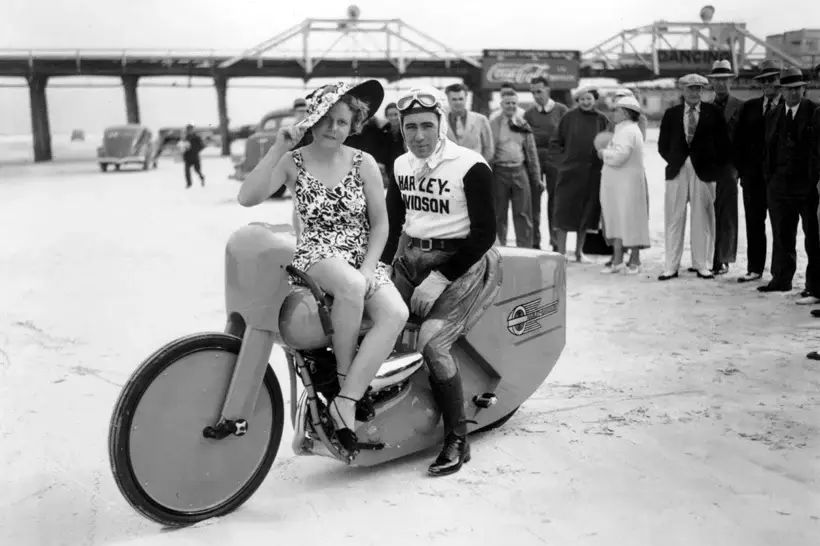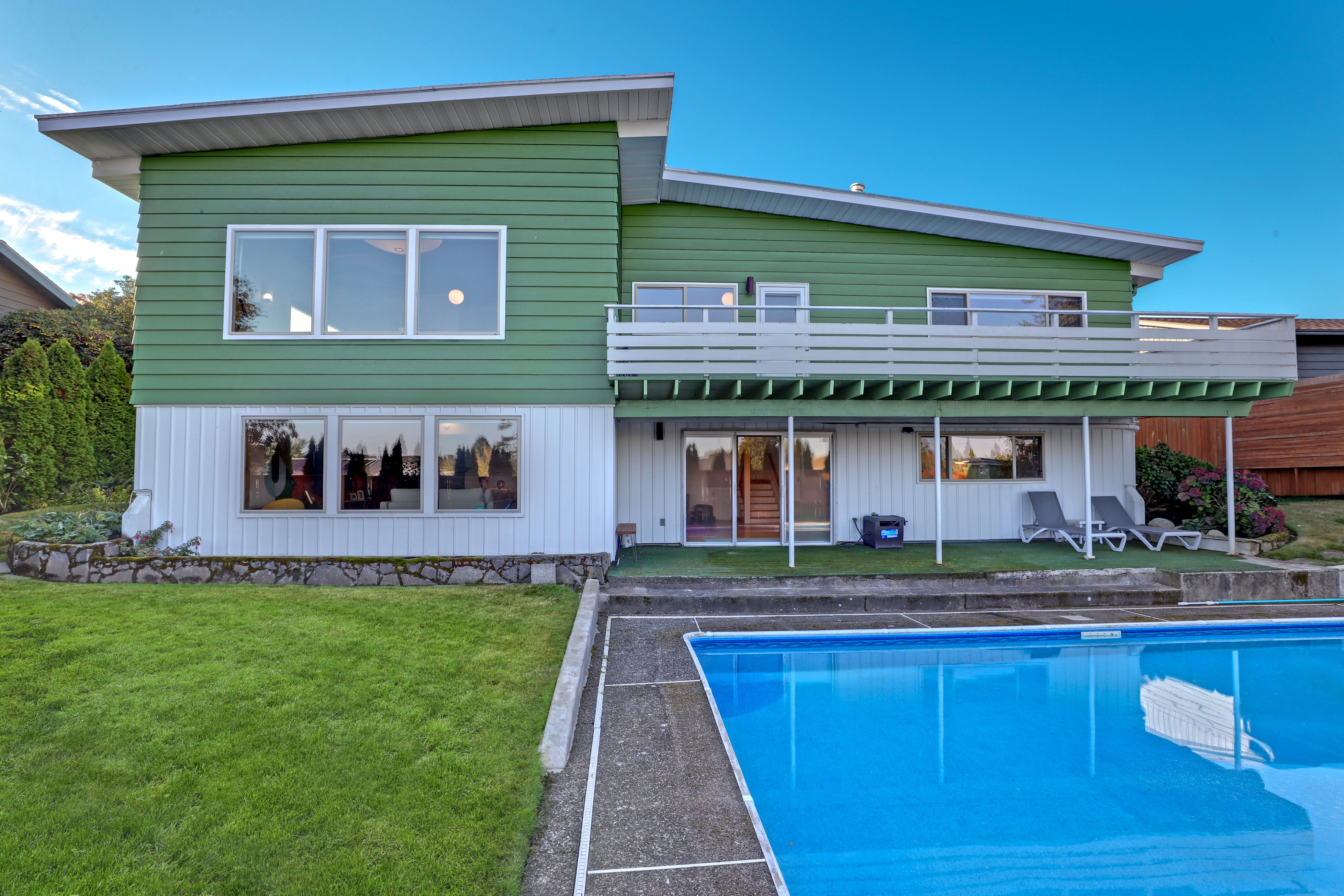Portland Fashion Veteran Elizabeth Dye Is Doing Whatever the Hell She Wants

Elizabeth Dye Big Dress Energy (from $4,000), Chocolate Box Gown ($2,400), and Orchid Puff Mini ($800)
Hair and Makeup by Kirstie Wight / Model: Ayla Hoffman of Q6 Model & Talent
Image: Christopher Dibble
Elizabeth Dye is saying no to the traditional white wedding.
The Portland designer has been creating chic nuptial gowns under her eponymous label for a decade now; she estimates she’s been a part of at least 5,000 weddings. Not all of the marriages worked out, but the love of her comfortable dresses (most of which start at $1,400) did, with multiple women coming back for their second weddings. Given all her success, there’s no reason for Dye to discard her old tricks now. But that’s exactly what she’s doing.
“I meet so many people who approach the whole [wedding] thing with so much trepidation and who fundamentally don’t identify with it,” she says about anxious brides. “Those are my people. Because it is a weird thing, bound up with so many expectations. And I approach it from a position of ‘Let’s just have some fun.... And it can be wild and it can be whatever you want.’”
Now, 10 years into an übersuccessful wedding gown career, Dye’s making a hard left, producing bold new looks far from the prevalent virginal-boho-angel-floating-on-a-cloud bridal aesthetic. The result is something wilder, brighter, and infinitely more colorful than we’ve seen before, and despite her veteran status in the Portland design community it’s the reason we’ve named her our Emerging Designer 2020. In the past year, Dye has unveiled collections with lilac mini power puffs, a dress of flowing, flame-colored tulle, and even a highlighter-yellow neon gown for brides who realize a white dress is merely a suggestion. (White gowns became popular only after 1840, when Queen Victoria married Prince Albert; the images spread around the world, making Victoria the first bridal influencer.)
“The response has been fucking awesome—like beyond my wildest dreams,” says Dye. “I’ve had several neon brides now. I took an ‘If I build it will they come?’ kind of risk. And I have felt rewarded.”

Each year Portland Monthly highlights an Emerging Designer; in 2020, the honor goes to Elizabeth Dye
Image: Christopher Dibble
All of this is perfectly on brand for Dye, who’s been consistently reinventing herself in our fashion microcosm for the past 20 years. In the summer of 1999, Dye was a promising Stanford law student spending the break back home in Portland and clerking for Stoel Rives. But she was miserable. So she quit law school and began cobbling together over a dozen freelance and temp jobs to survive and pay the impending student loans. One of the lowest paying, but most influential, was for Willamette Week, where Dye used her MFA in writing and a barrel of chutzpah to get a gig as the fashion columnist. It was through reporting for the alt-weekly that Dye learned about a new shop called Seaplane, billing itself as a loose collective where designers could sell DIY pieces. Nothing like it existed in Portland at the time, and Dye wanted in. She began upping her sewing skills, making meticulously crafted pieces to sell at the shop.
“Seaplane had this deconstructed vibe, but her stuff was really refined,” remembers Seaplane cofounder Holly Stalder of Dye’s foray into clothing design. “It was just really well made. We had a real scrappy vibe, and she helped step it up a little bit.”
Seaplane, which Stalder and her partner sold in 2008, is now a well-known part of Portland’s design history and arguably put the city on the map as an indie fashion capital long before Project Runway shone a light on our scene. The store gave locals a taste for custom work and acted as a design hub. Like many designers of the Seaplane era, Dye used it as a jumping-off point to evolve in the local style scene.
In 2005 she opened the English Department, which would become a bridal boutique. A few years in, she was running the shop and also custom-making about 85 wedding dresses a year by hand. Teetering on burnout, she created the Elizabeth Dye brand in 2010, putting 12 styles into factory production. The line took off instantly, with a New York bridal boutique picking up the entire collection. In 2013 Dye sold the English Department to Xtabay owner Liz Gross to focus on her brand’s growing clientele. These days, shoppers come to her light-filled studio in Northwest’s Film Exchange Building seeking out Dye’s balloon sleeves, plunging necklines, and vibrant dresses for the big day. Increasingly, the colorful collections mean they’re also there for galas and parties—something Dye loves.
“It’s very easy over time to lose your way as a designer. You don’t have endless opportunities to connect with your work,” Dye says. “Although I’ve done a lot of dresses that I’ve loved and I’ve worked with a lot of brides that I’ve loved, this is the first time in a while that this has felt so personal and so right. I just feel very excited to go to work every day.”




